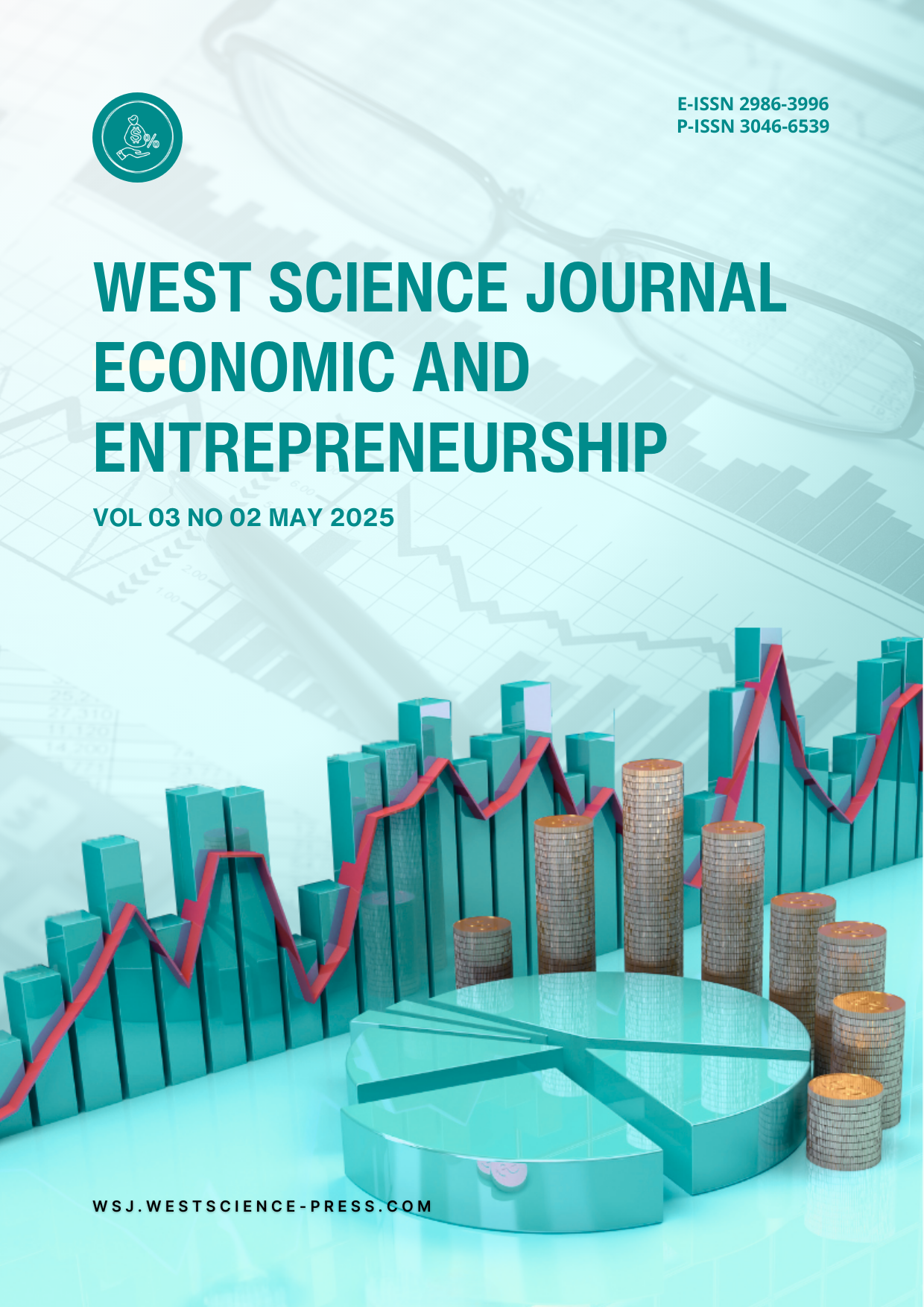Exploring the Knowledge Map of Green Entrepreneurship through Bibliometric and Co- Word Mapping Analysis Word Mapping
DOI:
https://doi.org/10.58812/wsjee.v3i02.1896Keywords:
Green Entrepreneurship, Sustainable Development, Co-Word Analysis, Bibliometric Analysis, VOSviewerAbstract
Green entrepreneurship has gained prominence as a transformative approach to addressing environmental challenges while promoting economic growth. Despite its growing scholarly appeal, the field remains fragmented with diverse interpretations and thematic overlaps. This study employs a bibliometric and co-word mapping analysis to explore the intellectual structure, thematic evolution, and emerging trends in green entrepreneurship literature. Drawing data from the Scopus database and analyzing it using VOSviewer, we identified key authors, collaboration networks, influential countries, and conceptual clusters shaping the field. Central themes include sustainable development, innovation, green economy, and entrepreneurship education. Temporal mapping reveals a recent shift toward educational and capability-based approaches, particularly post-2021. The study highlights the need for deeper theoretical integration, broader regional representation, and enhanced collaboration across disciplines and geographies. These findings provide a comprehensive knowledge map to guide future research, policy formulation, and entrepreneurial practices aligned with global sustainability goals.
References
[1] I. Muo and A. A. Azeez, “Green entrepreneurship: Literature review and agenda for future research,” Int. J. Entrep. Knowl., vol. 7, no. 2, 2019.
[2] N. H. Tien, P. M. Hiep, N. Q. Dai, N. M. Duc, and T. T. K. Hong, “Green entrepreneurship understanding in Vietnam,” Int. J. Entrep., vol. 24, no. 2, pp. 1–14, 2020.
[3] J. C. Allen and S. Malin, “Green entrepreneurship: a method for managing natural resources?,” Soc. Nat. Resour., vol. 21, no. 9, pp. 828–844, 2008.
[4] P. Demirel, Q. C. Li, F. Rentocchini, and J. P. Tamvada, “Born to be green: new insights into the economics and management of green entrepreneurship,” Small Bus. Econ., vol. 52, pp. 759–771, 2019.
[5] M. Schaper, “Understanding the green entrepreneur,” in Making ecopreneurs, Routledge, 2016, pp. 7–20.
[6] N. Donthu, S. Kumar, D. Mukherjee, N. Pandey, and W. M. Lim, “How to conduct a bibliometric analysis: An overview and guidelines,” J. Bus. Res., vol. 133, pp. 285–296, 2021.
[7] J. Gast, K. Gundolf, and B. Cesinger, “Doing business in a green way: A systematic review of the ecological sustainability entrepreneurship literature and future research directions,” J. Clean. Prod., vol. 147, pp. 44–56, 2017.
[8] S. E. A. Dixon and A. Clifford, “Ecopreneurship–a new approach to managing the triple bottom line,” J. Organ. Chang. Manag., vol. 20, no. 3, pp. 326–345, 2007.
[9] L. Makhloufi, A. A. Laghouag, T. Meirun, and F. Belaid, “Impact of green entrepreneurship orientation on environmental performance: The natural resource‐based view and environmental policy perspective,” Bus. Strateg. Environ., vol. 31, no. 1, pp. 425–444, 2022.
[10] E. E. Walley and D. W. Taylor, “Opportunists, champions, mavericks…? A typology of green entrepreneurs,” Greener Manag. Int., no. 38, pp. 31–43, 2002.
[11] G. Yi, “From green entrepreneurial intentions to green entrepreneurial behaviors: The role of university entrepreneurial support and external institutional support,” Int. Entrep. Manag. J., vol. 17, no. 2, pp. 963–979, 2021.
[12] P. Ebrahimi and S. M. Mirbargkar, “Green entrepreneurship and green innovation for SME development in market turbulence,” Eurasian Bus. Rev., vol. 7, no. 2, pp. 203–228, 2017.
[13] I. Silajdžić, S. M. Kurtagić, and B. Vučijak, “Green entrepreneurship in transition economies: a case study of Bosnia and Herzegovina,” J. Clean. Prod., vol. 88, pp. 376–384, 2015.
[14] M. Skordoulis, S. Ntanos, G. L. Kyriakopoulos, G. Arabatzis, S. Galatsidas, and M. Chalikias, “Environmental innovation, open innovation dynamics and competitive advantage of medium and large-sized firms,” J. Open Innov. Technol. Mark. Complex., vol. 6, no. 4, p. 195, 2020.
[15] P. Braun, “Going green: women entrepreneurs and the environment,” Int. J. Gend. Entrep., vol. 2, no. 3, pp. 245–259, 2010.
[16] M. Lotfi, A. Yousefi, and S. Jafari, “The effect of emerging green market on green entrepreneurship and sustainable development in knowledge-based companies,” Sustainability, vol. 10, no. 7, p. 2308, 2018.
[17] T. Neumann, “Impact of green entrepreneurship on sustainable development: An ex-post empirical analysis,” J. Clean. Prod., vol. 377, p. 134317, 2022.
[18] F. Farinelli, M. Bottini, S. Akkoyunlu, and P. Aerni, “Green entrepreneurship: the missing link towards a greener economy,” Atdf J., vol. 8, no. 3/4, pp. 42–48, 2011.
[19] T. Gevrenova, “Nature and characteristics of green entrepreneurship,” Trakia J. Sci., vol. 13, no. 2, pp. 321–323, 2015.
Downloads
Published
Issue
Section
License
Copyright (c) 2025 Loso Judijanto, Ardi Azhar Nampira

This work is licensed under a Creative Commons Attribution-ShareAlike 4.0 International License.
























 Instagram
Instagram 